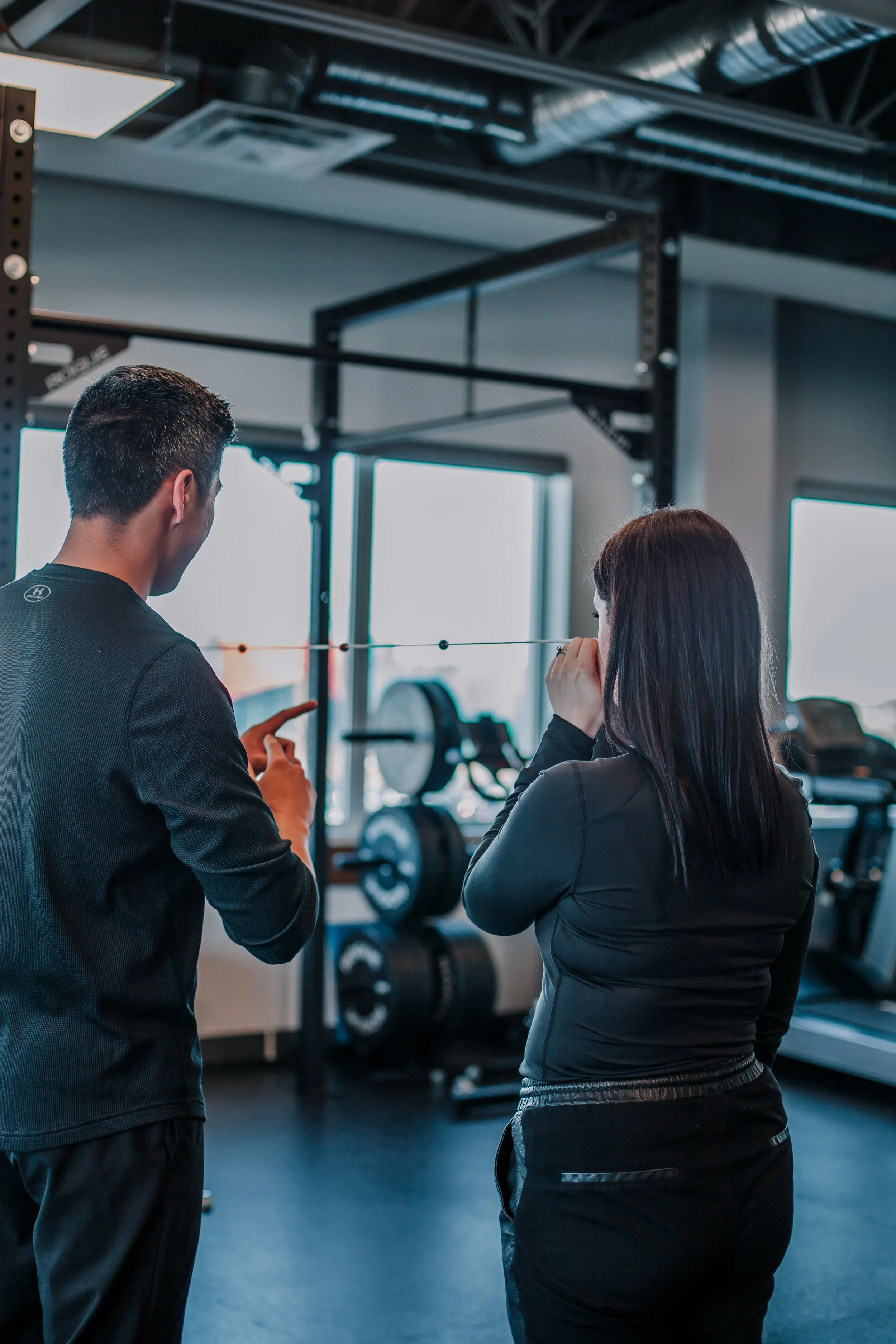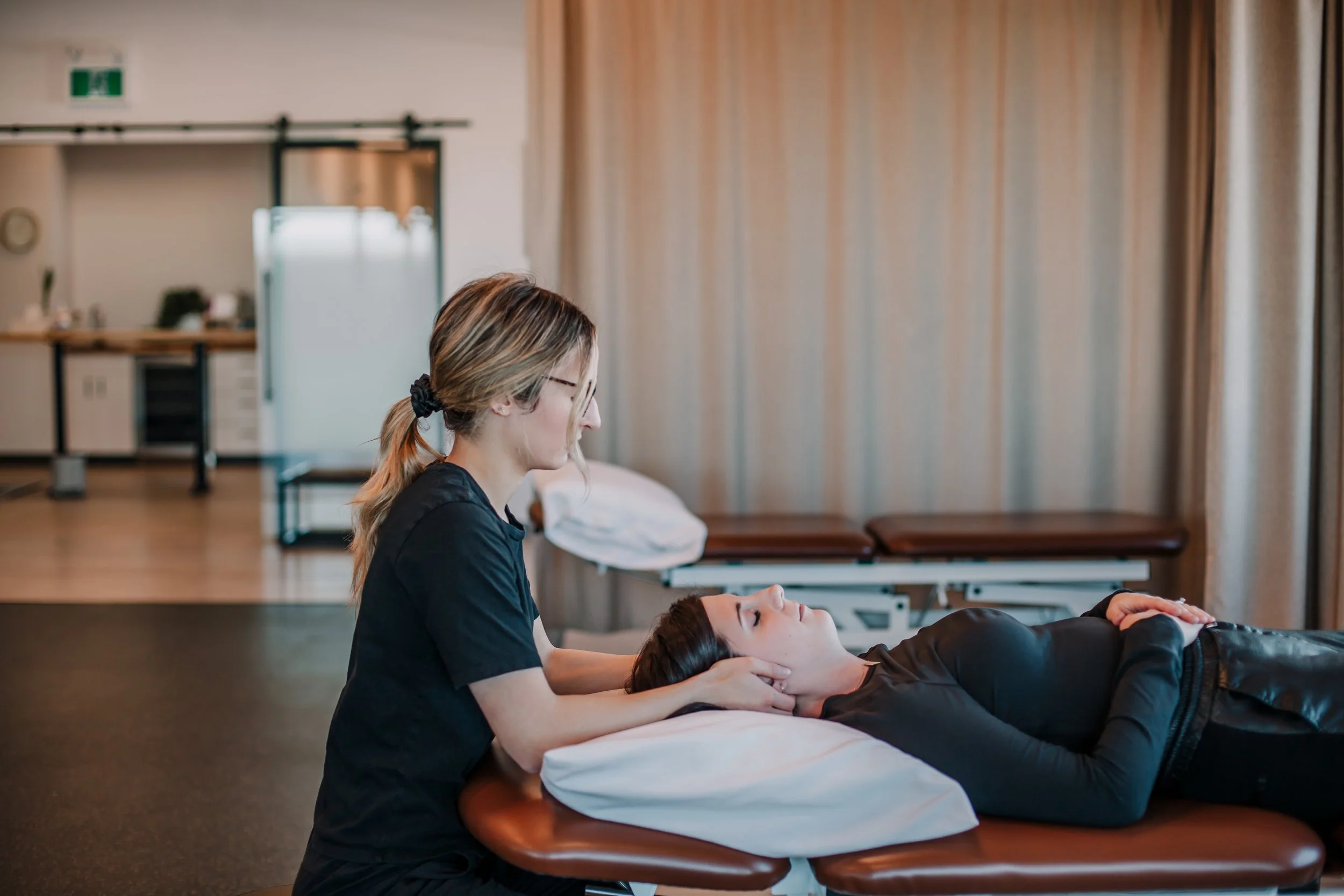
The Top 5 Ways Physiotherapy Can Help with Concussions
Check out the top 5 ways your Bloom Therapy Physiotherapist can facilitate your concussion recovery.
If you read our last post on concussions, you may want to dive a little deeper into how Physiotherapy can help.
Here are the top 5 ways your Physiotherapist can facilitate your recovery.
1. Vestibular Rehabilitation:
One of the commonly affected systems after a concussion is the vestibular system, which is responsible for our sense of balance and spatial orientation. Physiotherapists trained in vestibular rehabilitation can assess and treat these impairments. They can use specific exercises and techniques to help lessen dizziness, improve balance, and restore optimal function to the vestibular system.
2. Visual Rehabilitation:
Concussions can also disrupt the visual system, leading to issues such as blurred vision, double vision, difficulties with eye coordination, or trouble focusing. Physiotherapists who specialize in visual rehabilitation can design personalized exercises and therapies that target these visual disturbances. By improving eye movement control, focusing abilities, and visual processing speed, individuals can regain their visual function and alleviate associated symptoms.
3. Return-to-Play Assessment and Training:
For athletes recovering from concussions, an important goal is to safely return to their sport. Physiotherapists with expertise in sports-specific training can conduct comprehensive assessments to determine an individual's readiness to return to play. They can develop specialized training programs that gradually reintroduce physical activity, focusing on improving strength, endurance, agility, and balance. This approach ensures a safe and successful return to sport without risking re-injury.
4. Neck and Head Pain Management:
Concussions often result in neck and head pain, which can significantly impact an individual's quality of life. Physiotherapy interventions, such as manual therapy, therapeutic exercises, and cervical spine mobilizations, can help alleviate pain and restore normal neck function. By addressing these issues, physiotherapists can improve the overall well-being of individuals during their concussion recovery.
5. Education and Symptom Management:
An integral part of physiotherapy for concussions involves patient education and symptom management. Physiotherapists can provide guidance on energy conservation strategies, sleep hygiene practices, and relaxation techniques. They also teach individuals how to manage their symptoms effectively and monitor their progress throughout the recovery process.
Conclusion:
Physiotherapy is a vital component of concussion management and recovery. By addressing specific impairments and symptoms associated with concussions, physiotherapists can help individuals regain their day-to-day functioning and safely return to their regular activities, including sports. If you or a loved one have suffered a concussion, seeking the guidance and expertise of a physiotherapist can make a significant difference in the recovery journey. Remember, a thorough assessment and an individualized treatment plan can go a long way toward a successful recovery from concussions.
Feeling Dizzy?
Are you experiencing episodes of vertigo or the sensation of the room spinning? Benign paroxysmal positional vertigo, or BPPV for short is a disorder of the inner ear and is the most common cause of peripheral related vertigo. Vertigo is a complex and disabling condition that affects millions of individuals worldwide. Characterized by a false sense of spinning or movement, it can cause severe dizziness, nausea, and disorientation.
Are you experiencing episodes of vertigo or the sensation of the room spinning? Benign paroxysmal positional vertigo, or BPPV for short is a disorder of the inner ear and is the most common cause of peripheral related vertigo. Vertigo is a complex and disabling condition that affects millions of individuals worldwide. Characterized by a false sense of spinning or movement, it can cause severe dizziness, nausea, and disorientation.
BPPV occurs when crystals in the inner ear become displaced and end up in the semicircular canals, this creates a mismatch in signals and the illusion of vertigo. These vertigo episodes are triggered by movements of the head, and are relatively short in duration, lasting up to a minute. Symptoms can last weeks to months. This condition can have a significant impact on a person's daily life, often leading to difficulties with balance, coordination, and even anxiety or depression.
BPPV primarily affects those over 50 years old, but may occur in any age group, particularly when following a head trauma. The cause of BPPV is unknown, however preceding events such as head traumas, vestibular neuritis, or conditions which affect the vestibular system may contribute.
A physiotherapist or chiropractor can assess and treat BPPV. Diagnosis is made from a clinical history, positional testing with observation of eye movements, and by ruling out other causes. If BPPV is diagnosed your provider can perform positional maneuvers of the head specific to the canal involved to treat the vertigo. Additional assessment of the visual and balance systems can be beneficial to identify any lingering symptoms and can often be treated with vestibular rehabilitation exercises.
If you think you may be suffering from or have been diagnosed with BPPV, book in for a physiotherapy or chiropractic assessment.
- Sidney Wideman, MScPT


